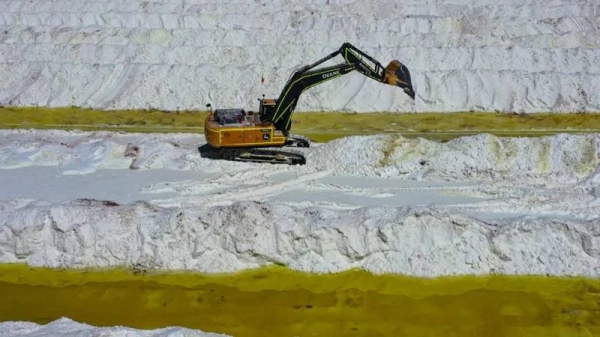
Chhatisgarh Environment Minister Mohammad Akbar wrote to Javadekar and requested “that coal blocks in the area of Hasdeo forest and Mand rivers as well as those in the area of the proposed elephant reserve not be included in the upcoming auction”
MUMBAI: Environmentalists backed by some state governments have raised concerns over the Indian government’s recent decision to auction 41 coal mines in ecologically sensitive pockets of Maharashtra state.
Chhattisgarh, Jharkhand, Madhya Pradesh and Odisha in central and eastern India are known habitats of Asian tigers, with Madhya Pradesh alone housing more than 500.
The state of Maharashtra said that the Bander coal block was too close to the northern edge of the Tadoba-Andhari Tiger Reserve (TATR), which with its core and buffer areas is home to 115 tigers and 151 leopards.
Both wildlife and tribal people will face the brunt of the move when vast chunks of forests will be chopped down to make way for the excavation of coal in open-cast mines.
Jairam Ramesh, Congress MP and former environment minister, described his “deep sense of shock at the manner in which coal blocks in areas of rich biodiversity were put up for auction” in a letter to Prakash Javadekar, the current environment minister.
“You will have the records: The ‘go’ and ‘no go’ classification of coal blocks was made by a joint team of the Ministry of Environment and Forests and Coal India in 2009-2010,” Ramesh said.
He added: “I am aware that some politically powerful power producers have had their eyes on some of these coal blocks — the one dangerously near Tadoba.”
He also urged Indian Prime Minister Narendra Modi to keep his promise on climate change.
BACKGROUND
• India launched auction of 41 coal blocks for commercial mining in areas supporting tiger reserves.
• Chhattisgarh, Jharkhand, Madhya Pradesh and Odisha in central and eastern India are known habitats of Asian tigers, with Madhya Pradesh alone housing more than 500.
In September last year, Modi pledged at the UN to double India’s nonfossil energy target to 400 gigawatts. Nearly 63 percent of India’s energy requirements are currently met by coal.
With the country facing an economic downturn, worsened by the COVID-19 pandemic, Modi launched the auction of 41 coal blocks for mining on June 18. He said that this would attract 330 billion rupees ($4.4 billion) in private investments and provide employment to local populations in eastern and central India. Bids have been invited from both domestic and foreign investors.
Maharashtra’s Environment and Tourism Minister Aaditya Thackeray has opposed the auction of the mine site near the Tadoba-Andhari Tiger Reserve in Chandrapur district. Chandrapur, a coal mining hub, is the most polluted town in the country. Three mines have been put up for auction in Maharashtra.
An Amravati-based conservationist and founder of Satpuda Foundation, which aims to protect wildlife, told Arab News: “If the coal mine auction comes through, it would fragment the tiger corridor.”
“In 2010, the coal ministry wanted to allocate the Bander coal mine near TATR as well as other mines in the region. Environmentalists opposed the project and the National Tiger Conservation Authority appointed a committee. We submitted our report expressing our apprehension about the impact of the proposed project on the forest and wildlife in Tadoba. Jairam Ramesh rejected the mining proposal in Bander and called for inspection of other mines.”
Jharkhand Chief Minister Hemant Soren said: “This is a very big policy decision. The state government should have been taken into confidence,” he said.
Chhatisgarh Environment Minister Mohammad Akbar wrote to Javadekar and requested “that coal blocks in the area of Hasdeo forest and Mand rivers as well as those in the area of the proposed elephant reserve not be included in the upcoming auction.”
Bittu Sahgal, founder ff Sanctuary Nature Foundations, said: “The government and policy makers need to recognize that forests, wetlands, grasslands and mangroves are infrastructures, not impediments to infrastructure.”












